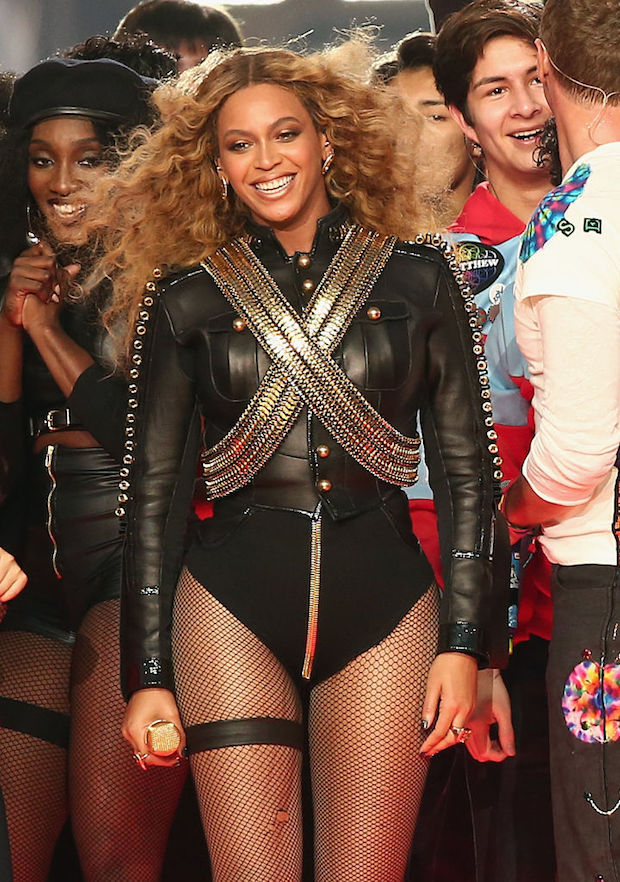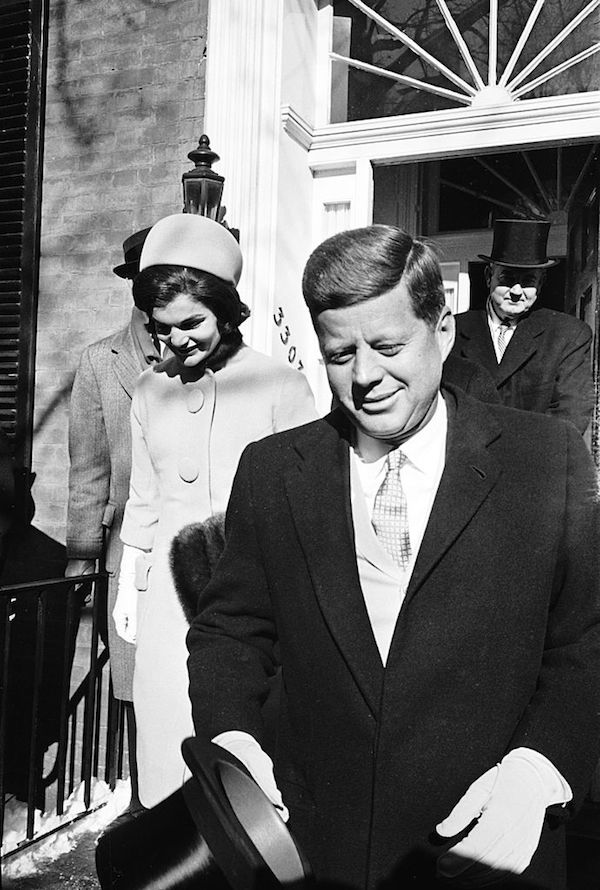What caused a stir was not so much the nude selfie that reality starlet Kim Kardashian posted on Instagram but more the way she justified it: “It’s so important that we let women express their sexuality and share their bodies however they choose” (Bueno 2016). Fashion writer for The Guardian Jess Cartner-Morley (2016c) picked up on this as an example of what she termed “contemporary ambivalence.” Because exposing your body may be an act of empowerment. Or it could simply reinforce the mechanisms that the action initially set out to dismantle.
Kim Kardasian på forsiden af GQ Magazine. Kim Kardashian er et eksempel på kendte kvinder, der vil have rettigheden til at vise deres kroppe frem, med eller uden tøj på, men som tager en del kritik for samtidig at øge seksualiseringen af kvinder.
Cartner-Morley argued that in fashion the leotard, also referred to as the bodysuit, speaks to this ambivalence by joining the positive message of sports, determination, and physical health with an unresolved stance on female sex appeal. As an example, she uses singer Beyoncé Knowles’s performance in a leotard at the 2016 Super Bowl for more than 100 million viewers.
The leotard is a form of power dressing that seemed to materialize the singer’s sentiment: “They [men] define what’s sexy. Men define what’s feminine. It’s ridiculous” (Mirza 2013). But taking control of sexy in this way may also invite the voyeuristic gaze which feminists have tried to dismantle for decades. As commented by writer Hadley Freeman (2013), “Beyoncé: Being photographed in your underwear doesn’t help feminism,” with reference to a GQ magazine cover shot featuring the singer scantily clad.
This contemporary ambivalence between body-positive attitudes and sexual objectification echoes the wider ambivalence in the book not only of gender, politics, and beauty norms but also of status, class, globalization, and subculture. Common for all these themes is that the social construction of identity that takes place through fashion is marked by clashing needs and aspirations.
Beyonce optrådte til Superbowl sammen med Chris Martin og Bruno Mars. Beyonces dragt er et eksempel på ambivalensen mellem feminisme og sex-appeal. Kilde/Getty
As phrased by cultural historian Elizabeth Wilson (2003: 246): “Fashion—as performance art—acts as vehicle for this ambivalence; the daring of fashion speaks dread as well as desire.” The point is that when considering Kardashian’s nude selfie and Beyoncé’s leotard as fashionable acts of performing social identity, they communicate both dread and desire because ambivalence is at the core of fashioning identity.
Politics of appearance
When John F. Kennedy was getting dressed for his Presidential Inauguration in 1961, he probably had quite a bit on his mind. He may have reflected on the personal struggle to reach this point in his career, the monumental tasks that lay ahead of him while in office, and how all this would affect his family. But, he was also thinking about whether or not to wear a top hat (Steinberg 2005).
At the time, most men within a Western context wore hats. For everyday use the fedora was popular, and for special occasions the top hat was customary. Since the late eighteenth century, the top hat had represented power and high class and was worn by politicians, bank executives, and other high-ranking men. Even Uncle Sam as a symbol of the United States wears a top hat.
John F. Kennedy ses her sammen med Jackie Kennedy ved hans indsættelse i 1961. Kennedy var i dilemma om hvorvidt han skulle have hat på til indsættelsen og endte med at gå rundt med den i hånden i en stor del af tiden. Kilde/Getty
Contrary to popular lore, Kennedy did in fact end up wearing a top hat to the Inauguration. But he was nevertheless held somewhat accountable in public debate for making “hats un-happen” (Krulwich 2012). Although it is unlikely that he alone brought down the milliner industry because he preferred to go bareheaded, there was a radical decrease in the popularity of men’s hats after his Inauguration. While Kennedy wore a top hat to the Inauguration, he kept taking it on and off during the event as if he really had not made up his mind after all. This apparent ambivalence toward the hat could be seen as Kennedy managing his social identity through the sartorial vehicle of the hat, what is referred to in this book as fashioning identity.
More than half a century later, a similar sartorial drama took place at the White House, and this time it was the tie, not the hat, that was the victim. The prime suspect was Barack Obama, according to Business Insider who ran a piece with the title: “Is President Obama Killing the Neck Tie Business?” (Giang 2013). During his time in office, Obama’s choice to often go tieless was seen as “an overt expression of the way this White House has been trying to make politics more human” (Friedman 2016). The example of Obama’s tie suggests a balancing act between tradition and innovation, authority and identification with the public, echoing JFK’s ambivalence toward hats.
Bogen "Fashioning Identity: Status Ambivalence in Contemporary Fashion" er skrevet af lektor i modeteori på Kunstakademiets Designskole (KADK) Maria Mackinney-Valentin. Bogen blev udgivet den 21. februar i år hos Bloomsbury.


























